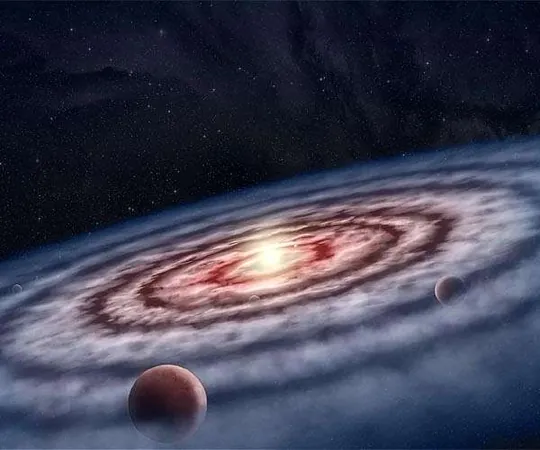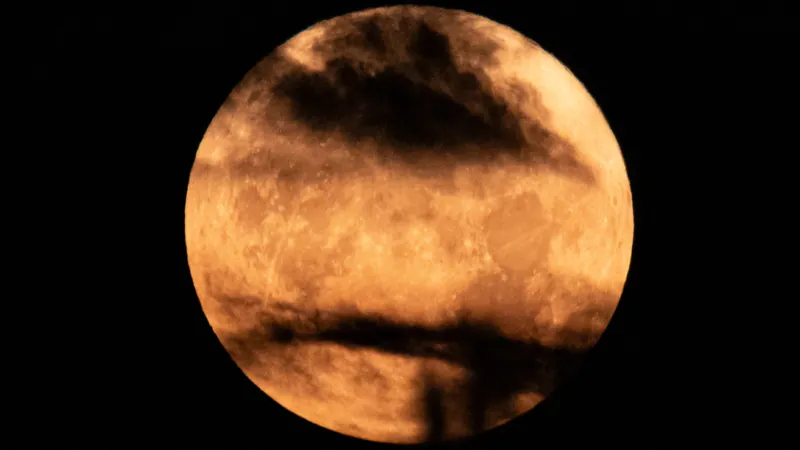
Revolutionary Discovery: How Gas Disks Shape Planet Formation Over Millions of Years
2025-06-16
Author: Wei
Astronomers Unlock Secrets of Planet-Forming Gas Disks
In an astounding breakthrough, an international team of astronomers has delved deep into the mysteries of planet formation, revealing vital insights about the evolution of gas and dust disks. Utilizing state-of-the-art observations from the Atacama Large Millimeter/submillimeter Array (ALMA), their findings shed light on how these cosmic structures evolve over millions of years, as detailed in a recent special issue of The Astrophysical Journal.
AGE-PRO Program: Charting the Cosmic Landscape
The study stems from the ambitious AGE-PRO program (ALMA Survey of Gas Evolution of PROtoplanetary Disks), which meticulously analyzed 30 disks surrounding Sun-like stars. By measuring gas content through various evolutionary phases, the researchers made a groundbreaking discovery: gas and dust do not dissipate at the same pace. Ke Zhang, Principal Investigator from the University of Wisconsin-Madison, emphasized that this was the first comprehensive assessment of gas disk masses and sizes throughout the life of planet-forming disks.
The Lifespan of Protoplanetary Disks: Crucial for Planet Formation
Protoplanetary disks can persist for millions of years around young stars, and their evolving gas and dust composition critically influences planetary formation and development. Notably, the initial conditions—including mass, size, and spin—of these disks shape the architecture of emerging planetary systems.
ALMA's Precision Reveals New Molecular Insights
With ALMA's unmatched precision, astronomers detected subtle molecular signatures within these disks. The focus was primarily on systems aged between one and five million years in the Ophiuchus, Lupus, and Upper Scorpius star-forming regions. This extensive survey provided essential data, establishing a valuable foundation for future studies on planet formation.
Surprising Findings: Gas Outlasts Dust!
One of the most startling revelations was that gas often lingers longer than dust in aging disks, altering the gas-to-dust mass ratio significantly. Zhang pointed out, "The most surprising finding is that while many disks dissipate within a few million years, those that endure actually retain more gas than previously anticipated. This fundamentally shifts our perspective on how and when planets acquire their atmospheres."
Chilean Researchers Make Significant Contributions
Teams from the University of Chile and the Center for Astrophysics and Associated Technologies (CATA) played pivotal roles in this research. Laura Perez highlighted the importance of this study in shifting the focus from solids to direct measurements of gas evolution—a critical factor in understanding giant planet formation.
Trailblazing Discoveries: New Worlds on the Horizon
Among the exciting findings, Carolina Agurto led an analysis in Upper Scorpius that illustrated how longer-lived disks hold even more gas than theoretical models suggested. Anibal Sierra's exploration of the bright disk 2MASS J16120668-3010270 led to the detection of two potential forming planets, one of which was inferred through its gravitational influence. Future observations from the James Webb Space Telescope are set to confirm these cosmic candidates.
Collaboration Fuels Scientific Advancement
This monumental research exemplifies the essence of global collaboration in science. Co-Principal Investigator Ilaria Pascucci of the University of Arizona stated, "Scientific progress is driven by diverse perspectives and collaborative efforts from individuals across the world, each pushing the frontiers of discovery."



 Brasil (PT)
Brasil (PT)
 Canada (EN)
Canada (EN)
 Chile (ES)
Chile (ES)
 Česko (CS)
Česko (CS)
 대한민국 (KO)
대한민국 (KO)
 España (ES)
España (ES)
 France (FR)
France (FR)
 Hong Kong (EN)
Hong Kong (EN)
 Italia (IT)
Italia (IT)
 日本 (JA)
日本 (JA)
 Magyarország (HU)
Magyarország (HU)
 Norge (NO)
Norge (NO)
 Polska (PL)
Polska (PL)
 Schweiz (DE)
Schweiz (DE)
 Singapore (EN)
Singapore (EN)
 Sverige (SV)
Sverige (SV)
 Suomi (FI)
Suomi (FI)
 Türkiye (TR)
Türkiye (TR)
 الإمارات العربية المتحدة (AR)
الإمارات العربية المتحدة (AR)